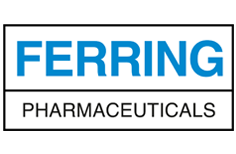New Data Supports Significant Economic and Clinical Value of MENOPUR® in IVF
Study could have major impact on the decision-making process with respect to Infertility treatment
Amsterdam, The Netherlands – 30 June, 2009 –
New data from an economic analysis presented today at this year’s European Society of Human Reproduction and Embryology (ESHRE) congress showed that, within the parameters of the simulation model used, the in vitro fertilisation (IVF) treatment MENOPUR (highly-purified human menopausal gonatropin or HP-hMG) offered considerable cost-savings over recombinant follicle stimulating hormone (rFSH).1 The cost-effectiveness of HP-hMG compared with rFSH suggested by this data could make it a more attractive choice for use in infertility treatment within a fixed healthcare budget.
In today’s difficult global financial situation, the cost-effectiveness of infertility treatments, such as IVF, is more important than ever. Experiencing fertility problems is deeply distressing and isolating for couples and the cost of treatment is one of many considerations for people seeking treatment. A recent audit of European infertility patient groups showed that infertile couples are calling for clear information on the cost-effectiveness, as well as the efficacy of individual treatments.2
HP-hMG and rFSH are two commonly used hormonal therapies belonging to the class of drugs known as gonadotropins that enhance egg production in IVF treatment. HP-hMG, contains both FSH and hCG-driven (human chorionic gonadotropin) LH-activity (luteinizing hormone). In contrast, rFSH is a recombinant product and contains only rFSH.
“Until recently, discussions regarding funding for infertility treatment services have been hindered by a relative paucity of economic studies of the specific treatments”, points out study investigator Dr Jaro Wex from PharmArchitecture, UK.
“Our new study compared success rates and value for money of gonadotropins in IVF and this work is likely to have a major impact on the decision-making process with respect to IVF treatment. The study showed that HP-hMG is a more attractive option than rFSH within a fixed budget, as it offers considerable cost savings over rFSH, not only in terms of costs per treatment cycle, but also in costs per live births.”
Health economic data
The new study determined the cost-effectiveness of different gonadotropins in IVF cycles involving frozen embryo transfers using a simulation model. The economic evaluation compared HP-hMG and rFSH using individual patient data (n=986) pooled from two large, randomised, multi-national, non-inferiority trials (EISG3 and MERiT4).5
The simulation model used both live-birth data for the compared products and published UK costs of IVF related medical resources. The main objectives were to determine for each patient starting treatment consisting of one fresh and up to two cryo or fresh cycles: (1) number of live-births (2) average cost of treatment; (3) average cost per live-birth; (4) incremental cost-effectiveness; (5) impact of inclusion of maternal and neonatal costs arising from successful pregnancies.
After a sequence of one fresh and up to two frozen or fresh cycles, the cumulative live-birth rate was 53.7% for HP-hMG and 44.6% for rFSH (p<0.005). The use of HP-hMG resulted in a saving of £875 per patient cycle, a saving that could finance an additional treatment for every seven treatments delivered.1 Furthermore, the cost per IVF baby delivered with HP-hMG was £11,157, compared with £14,227 for rFSH(p<0.001).1
Within the context of this economic analysis, HP-hMG offered a superior cost-effectiveness in producing live-births over rFSH in women undergoing conventional IVF and, when available, frozen embryo transfer cycles.1 Since this study attempts to realistically model the actual situation in patients undergoing infertility management, it is believed that it will have a major implication on the decision-making process when choosing the appropriate gonadotropin for ovarian stimulation.1
“I think the cost-effectiveness of treatments is a real issue for couples considering infertility treatment such as IVF today”, says Clare Lewis-Jones from Infertility Network UK. “Despite the economic downturn, we see that couples will somehow find the money for treatment, although many have to make sacrifices in order to do this – it’s a question of priorities and the opportunity of having a family is an extremely high priority for infertile couples.”
– ENDS –
MENOPUR
MENOPUR belongs to a class of drugs known as gonadotropins and contains both FSH (follicle stimulating hormone) and hCG-driven (human chorionic gonadotropin) LH-activity (luteinizing hormone). HP-hMG is used to stimulate the development of multiple follicles in women participating in an ART programme. HP-hMG is also used to treat infertility in women caused by anovulation (low-level production of eggs). MENOPUR is used by over 75,000 patients each year and is currently licensed in over 50 countries across the world.
About Ferring Pharmaceuticals
Ferring Pharmaceuticals is a research-driven, specialty biopharmaceutical group active in global markets. The company identifies, develops and markets innovative products in the areas of reproductive health, urology, gastroenterology and endocrinology. Ferring’s fertility portfolio of treatments gives infertile couples the chance to have babies and includes its flagship brand MENOPUR (HP-hMG), a recognised high quality treatment for infertility. Ferring has operating subsidiaries in over 45 countries. To learn more about Ferring or our products please visit www.ferring.com.
For more information, please contact
Claire Pay / Louisa Revill
Greenhouse Communications
+44 (0)20 7798 9922
+44 (0)20 7798 9900
louisa.revill@greenhouse-communications.com
Helen Gallagher
Ferring Pharmaceuticals
+41 58 301 0051
helen.gallagher@ferring.com
References
-
- Wex J et al. HP-hMG versus rFSH in a combination of fresh and cryo cycles in IVF: success rates and economic implications ESHRE. Amsterdam 2009, abstract number O-103.
- 2009. Greenhouse Data on file.
- European and Israeli Study Group on Highly Purified Menotropin versus Recombinant Follicle-Stimulating Hormone. Efficacy and safety of highly purified menotropin versus recombinant follicle-stimulating hormone in in vitro fertilization/intracytoplasmic sperm injection cycles: a randomized, comparative trial. Fertil Steril 2002; 78(3): 520-528.
- Andersen AN, et al. Clinical outcome following stimulation with highly purified hMG or recombinant FSH in patients undergoing IVF: a randomized assessor-blind controlled trial. Human Reproduction 2006 Dec; 21(12):3217-27.
- Platteau et al. Reprod Biomed Online 2008; 17:190-8.
